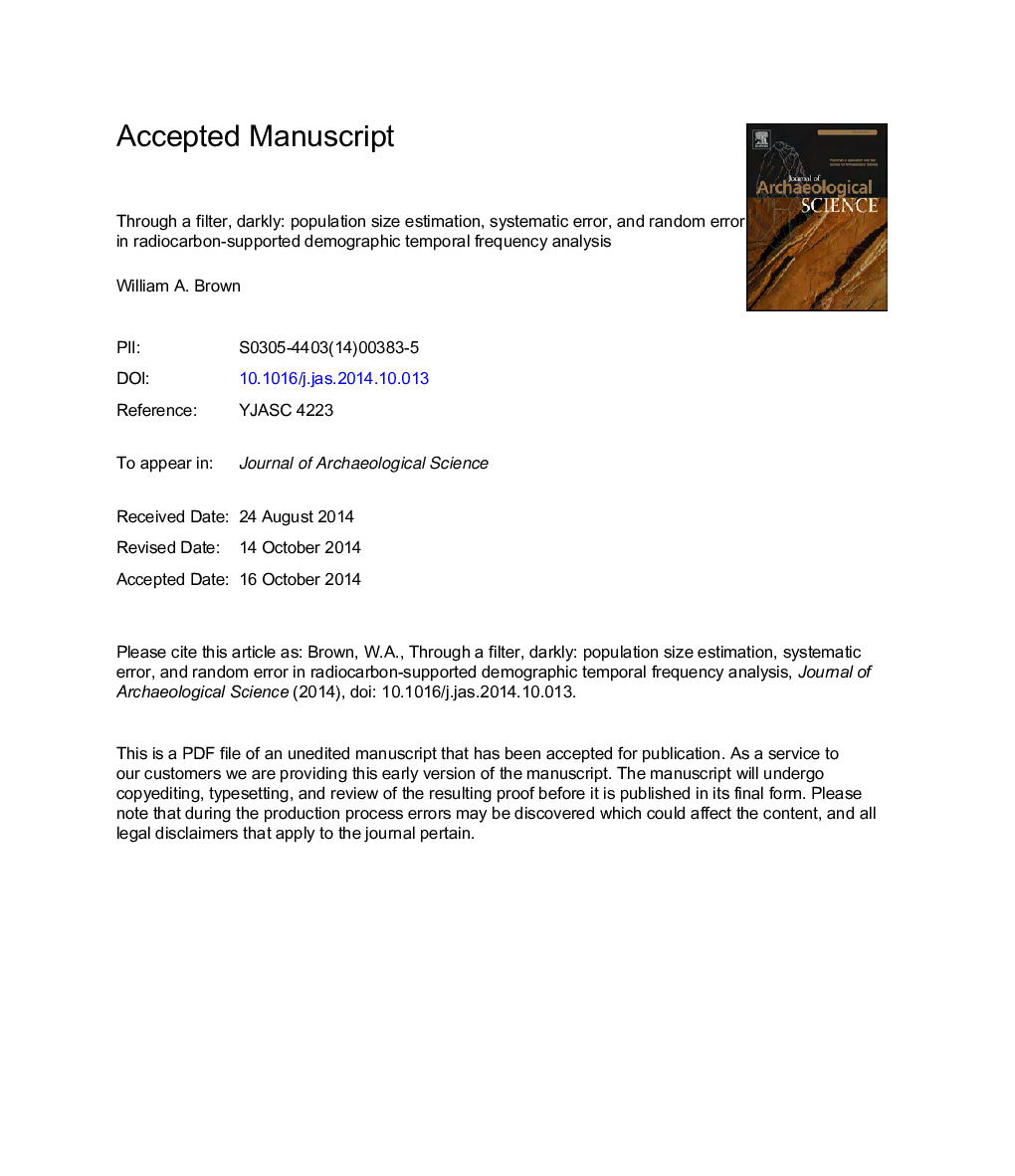| Article ID | Journal | Published Year | Pages | File Type |
|---|---|---|---|---|
| 7442499 | Journal of Archaeological Science | 2015 | 323 Pages |
Abstract
Archaeologists are increasingly concerned that the non-linear relationship between the calendric and radiocarbon timelines may introduce anomalous structures into radiocarbon-supported temporal frequency distributions (tfds) - time series data describing temporal fluctuations in the frequency of archaeological, paleontological, or other geological deposits. This concern emphasizes a need for improved middle range theory on tfd formation, addressing the interaction between several stochastic processes. This paper outlines a Monte Carlo simulation designed to explore the influence of several variables on tfd morphology, including the nonlinear calendric-to-radiocarbon age relationship. The results indicate that this non-linear relationship entails greater variance between identically generated tfds over some temporal intervals than others but does not predictably lead to tfd peaks over these intervals as previously suggested. Additional variance between identically generated tfds results from small sample sizes and high values in the underlying TFD. Smoothing the tfd is a solution not only to calibration curve interference but also to sample size-dependent sampling error.
Keywords
Related Topics
Physical Sciences and Engineering
Materials Science
Materials Science (General)
Authors
William A. Brown,
